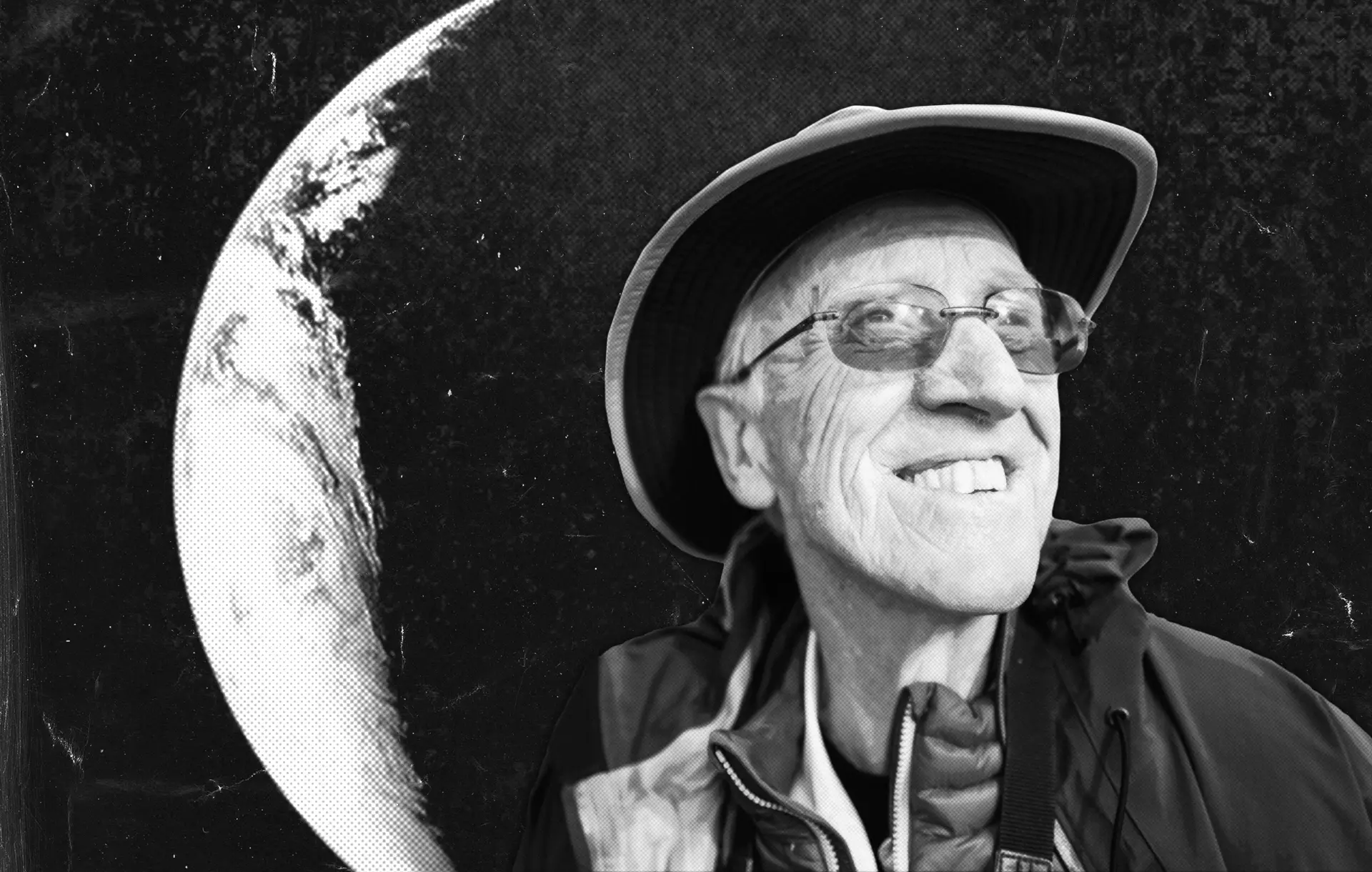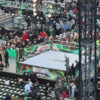Who remembers the Whole Earth Catalog (WEC)? Actually, it seems everybody, including those that were born much later than the first issue of the legendary catalog/guide/book, or whatever that thing was or turned into. At various points in time, it was branded as a ‘hippie thing’ and even the communes, one of the things propagated on its pages are long gone. Still, if you try to fetch a copy of the 30th Anniversary Issue on Amazon it will set you back for some $300. And then, just try to find a copy of the original from 1968. At any price.
And then, there’s Stewart Brand, the driving force behind WEC. If there ever was a guy who had the perfect sense of being at the right place at the right time from the ’60s on and inspiring so many things, and quite a number of influential people, it’s Brand. The general public might not be aware of it, but then Brand doesn’t care and at the age of 82 he’s still at it.
But, is the age of the Whole Earth Catalog (Brand’s most known invention) gone, or is it still relevant in any shape or form, at least in its spirit?
From Just Being Stewart to Becoming a Brand
Digging a bit under the surface of WEC, something that became an iconic brand itself, brings up more than one story about Stewart Brand.
Brand seems to have been on the frontier of everything new and challenging before, during, and after WEC. Giving a detailed profile of Brand for the British daily The Guardian back in 2013, Carole Cadwalladr wrote:
“Stewart Brand didn’t just happen to be around when the personal computer came into being; he’s the one who put ‘personal’ and ‘computer’ together in the same sentence and introduced the concept to the world. He wasn’t just a member of the world’s first open online community, the Well; he co-founded it. And he wasn’t just another of those ’60s acid casualties; he was the definitive ’60s acid casualty. Well, not casualty exactly, but he was there taking LSD in the days when it was still legal, with the most famous hipster of them all, Ken Kesey and his Merry Pranksters.”
Brand first came to public prominence in 1966 when he initiated a public campaign to make NASA release a photo that was at that time still only a rumor. It was a satellite image of the sphere of Earth, so-called “Whole Earth image”, something that became the cover and the main symbol of WEC. Brand thought that “the image might be a powerful symbol, evoking a sense of shared destiny and adaptive strategies from people. The Stanford-educated Brand, a biologist with strong artistic and social interests, believed that there was a groundswell of commitment to thoroughly renovating American industrial society along ecologically and socially just lines, whatever they might prove to be.”
Stewart Brand didn’t just happen to be around when the personal computer came into being; he’s the one who put ‘personal’ and ‘computer’ together in the same sentence
But in 1968, when the first issue of the Whole Earth Catalog hit the stands, so did Tom Wolfes’s iconic psychedelia book The Electric Kool-Aid Acid Test about the adventures of LSD experimentalist Ken Kesey and his Merry Pranksters. As Cadwalladr notes, right from the start, on page two, Stewart Brand shows up – “driving the Pranksters’ pick-up truck (“a thin, blond guy”, according to Wolfe, with “a blazing disk on his forehead” and “a whole necktie of Indian beads … but no shirt”).”
That same year, Brand was also present “at what came to be known as the ‘mother of all demos’ when the world first saw what computers could do.” Actually, he was not just present, “he was operating the camera and consulting on the presentation.” And as it turns out, Brand was the one who coined the phrase “personal computer.”
Later on, in 1972, Brand was the first one to write an article (in Rolling Stone magazine) in which he presented ideas “that he understood before almost anyone else, was that cyberspace was some sort of the fourth dimension and the possibilities were both empowering and limitless.”
Not that Brand stopped there, as he is somehow following in the footsteps of one of the key psychedelic songs by The Beatles – “Here, There & Everywhere”. At the time Cadwalladr wrote her article, Brand was engaged in trying to resurrect extinct species by retro-engineering their DNA. Who knows what other projects he is still working on, even past 80 years of age.

The Catalog that was Whole, Earth and a Few More Things
Still, many consider the Whole Earth Catalog Brand’s main legacy.
WEC was fully functional between 1968 and 1972, occasionally cropping up in various editions up to 1998. Its online site is still operational, while various copies are available on a number of sites. The so-called Last Whole Earth Catalog (June 1971) won the first U.S. National Book Award in category Contemporary Affairs. It was the first time a catalog had ever won such an award. Brand’s intent with the catalog was to provide education and “access to tools” so a reader could “find his own inspiration, shape his own environment, and share his adventure with whoever is interested.
Beginning under the slogan “We are as gods and might as well get good at it,” as Ana Wiener wrote in New Yorker a few years back, “At the height of the civil rights movement and the war in Vietnam, the Whole Earth Catalog offered a vision for a new social order—one that eschewed institutions in favor of individual empowerment, achieved through the acquisition of skills and tools. The latter category included agricultural equipment, weaving kits, mechanical devices, books like Kibbutz: Venture in Utopia, and digital technologies and related theoretical texts, such as Norbert Wiener’s Cybernetics and the Hewlett-Packard 9100A, a programmable calculator.” Its above statement of purpose was explained by Brand and his collaborators as, “[a] realm of intimate, personal power is developing—the power of the individual to conduct his own education, find his own inspiration, shape his own environment, and share his adventure with whoever is interested.”
WEC’s concept, content, and relevance were certainly there during the period it actually existed. Some of the ideas presented, like that of communes, might not have much significance today. Some WEC favorites, like the ideas of thinker R. Buckminister Fuller, are still being hotly debated. Others, like those of media theoretician Marshall McLuhan (remember “media is the message”), are somehow forgotten in this age of Instagram and TikTok.
Basically, Brand invented the blogosphere long before there was any such thing as a blog… No topic was too esoteric, no degree of enthusiasm too ardent
Still, it is quite undeniable that the whole concept and ideas presented in WEC have had an undeniable impact. Late Apple CEO Steve Jobs, back in 2005, said in one of his public speeches: “[w]hen I was young, there was an amazing publication called the Whole Earth Catalog, which was one of the bibles of my generation… It was sort of like Google in paperback form, 35 years before Google came along. It was idealistic and overflowing with neat tools and great notions.”
Kevin Kelly, one of WEC collaborators who still operates a site that carries the Catalog’s ideas noted that it was “a great example of user-generated content, without advertising, before the Internet. Basically, Brand invented the blogosphere long before there was any such thing as a blog… No topic was too esoteric, no degree of enthusiasm too ardent, no amateur expertise too uncertified to be included…” In many ways, the same idea is echoed by John Markoff, a technology writer for the New York Times, who said that the Whole Earth Catalog was “the internet before the internet. It was the book of the future. It was a web in newsprint.”
In many ways, as Wiener wrote, “the spirit of the catalog—its irreverence toward institutions, its emphasis on autodidacticism, and its sunny view of computers as tools for personal liberation—appeals to a younger generation of technologists.”
So does yet another Whole Earth Catalog slogan Stewart Brand came up with: “Stay hungry, stay foolish.” He certainly still abides by that concept.




